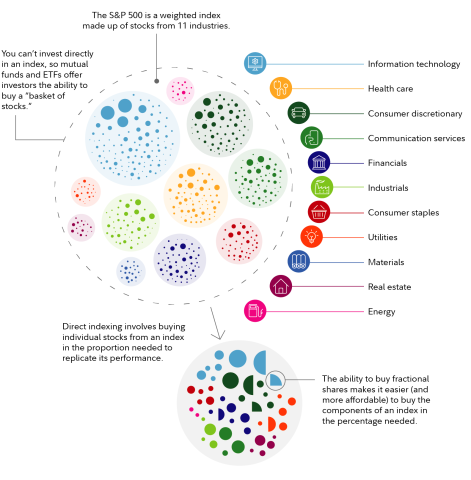When the Tax Cuts and Jobs Act (TCJA) Act passed in 2017, we were told that all of the provisions – lower tax rates, much more generous estate tax exemption – would sunset at the end of 2025. That seemed a long way off back then. But now it is 2024, less than two years before what could be a jarring shift in our tax regime.
When it comes to investing, the most normal inclination in the world is to question why an underperforming investment was included in the portfolio. So, why not go ahead and ditch those foreign stocks and buy American?
Starting in 2024, 529 account holders will be able to transfer up to a lifetime limit of $35,000 to a Roth IRA for a beneficiary.
The Roth IRA rule can help Roth IRA owners avoid taxes and penalties for nonqualified withdrawals. It can also help people who want to fund a Roth in years when their income maybe too high to contribute.
One of the best things about being a part of the team at Cranbrook Wealth, is being able to spend our time and resources on causes that are near and dear to our hearts, and that’s the whole idea behind Cranbrook Cares. We’re able to give back and support causes we love, in ways that are truly meaningful to us and to others, and we’d like to share the story of one of those causes that holds a special place in our hearts.
For the past two years, Pickleball has been the fastest growing sport, and one big reason is that it’s relatively easy to get up to speed and have fun after only a few hours of play, especially if you have a tennis or racquetball or even ping pong background. Contrast this with golf and tennis where you can take lessons for years and still find yourself just bad today as you were before the lessons! These are some of the reasons Cranbrook Wealth Management recently funded a Pickleball court resurfacing. Here's why we love the sport.
A staggering 18.47% of the world’s population lives in China, and by some measures, the nation makes up 18.2% of all global economic activity. This compares to the U.S. who has 12.4% of global economic activity. Yet with only 5% of the world’s population, the MSCI All-World Index that is designed to capture the total world investment opportunity set, you find that the United States makes up just under 60% of the total market allocation. Meanwhile, China makes up just 3.3% of the total market allocation.
When you’re on a commercial flight, and the plane is approaching turbulence, the captain comes on the intercom to let you know to buckle up and expect ‘rough air.’ There should be similar warnings about ‘rough air’ in the markets, and this is a good time to offer one.
Cranbrook Wealth Management has added “Direct Indexing” to our arsenal of tax managed investments.
By: Randall A. Denha, J.D., LL.M.
By now you’ve heard about the collapse of Silicon Valley Bank (“SVB”) and the ripple effects it had on its customer base and the concern over the banking system as a whole. While this estate planning attorney wasn’t familiar with SVB, its collapse was the second...
Many see risk tolerance as a simple measure of their financial ability to withstand market losses. While there are many financial factors to consider (including income, net worth, liquidity, and time horizon), the emotional component of managing risk can’t be underestimated. Recognizing that emotions like fear and exuberance are reactionary mechanisms that tend to flare up over short-term events may keep you in check when examining risk tolerance in the context of your long-term strategy.
Gifting and charitable donations are often used to reduce taxable incomes and redistribute wealth within a family. Annual tax-free gifting limits reset each year, but some high-net-worth individuals may wish to instead take advantage of 2022’s relatively high lifetime gift tax exemption to maximize a tax mitigation strategy.
As your parents age, they may become less capable of managing their own finances. Here are some ways to approach the subject and ways advanced planning can help ease elder care transitions.











